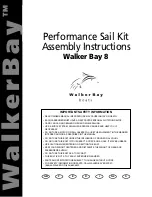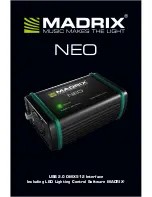
B
I
PAP S
YNCHRONY
S
ERVICE
& T
ECHNICAL
I
NFORMATION
S
PECIFICATIONS
& S
YSTEM
F
EATURES
- P
AGE
5
1032409, R
EV
. 00
R
AMP
F
EATURE
BiPAP Synchrony is equipped with a linear ramp function. The ramp feature will reduce the pressure
and then gradually increase (ramp) the pressure to the prescription pressure setting so patients can
fall asleep more comfortably.
D
IGITAL
A
UTO
-T
RAK
S
ENSITIVITY
An important characteristic of the BiPAP Synchrony is its ability to recognize and compensate for
unintentional leaks in the system and to automatically adjust its trigger and cycle algorithms to
maintain optimum performance in the presence of leaks. This feature is known as Digital Auto-Trak
Sensitivity. The following sections examine this function in detail by describing the leak tolerance
function and sensitivity.
L
EAK
T
OLERANCE
A microprocessor monitors the total flow of the patient circuit and calculates patient flow values. The
BiPAP Synchrony uses two leak estimation algorithms. A conservation of mass algorithm is used to
compute the average leak for a given pressure support relationship. This average leak is a high
estimate during EPAP pressure and a low estimate during IPAP pressure.
A better leak estimate, enabled by the digital system, is the parabolic leak algorithm. Parabolic leak is
proportional to the square of the patient pressure; therefore, the leak estimate is correlated to the
changing patient pressure. Both algorithms include unintentional circuit leak and are averaged over
several breaths.
The total circuit flow is comprised of the circuit leak and the patient flow. The calculated patient flow is
the circuit flow minus the circuit leak. Patient flow is a primary input into the triggering and cycling
mechanisms.
S
ENSITIVITY
An essential feature of the BiPAP Synchrony while operating in the S and S/T modes is its ability to
effectively sense spontaneous breathing efforts, which causes the unit to trigger IPAP and cycle to
EPAP. Because no preset sensitivity threshold can assure patient and machine synchrony with
changing breathing efforts and circuit leaks, the BiPAP Synchrony continuously tracks patient
breathing patterns and automatically adjusts sensitivity thresholds to ensure optimum sensitivity as
breathing patterns change or as circuit leaks change. The algorithms used to ensure optimum
sensitivity are the Volume Trigger/Cycle, Shape Trigger, Flow Reversal and Spontaneous Expiratory
Threshold (SET).
The shape trigger/cycle is another method used to trigger IPAP and/or cycle from IPAP to EPAP during
spontaneous breathing in the S and S/T modes. This method continuously tracks patient inspiratory
and expiratory flow and adjusts the spontaneous trigger and cycle thresholds for optimum sensitivity.
The Shape Signal appears as a shadow image of the patient’s actual flow. The shape signal functions
as a sensitivity threshold at either inspiration or expiration. When the patient’s flow rate crosses the
shape signal, the unit changes pressure levels. The shape signal is created by offsetting the signal
from the actual patient flow by 15 lpm and delaying it for a 300 ms period. This intentional delay
causes the shape signal to be slightly behind the patient’s flow rate. A sudden change in patient flow
will cross the shape signal, causing the pressure level to change.
A second method used to cycle off IPAP during spontaneous breathing in the S and S/T modes is
called Spontaneous Expiratory Threshold (SET). The SET rises in proportion to the inspiratory flow
rate on each breath. When the SET and actual patient flow value are equal, the unit cycles to EPAP.
















































